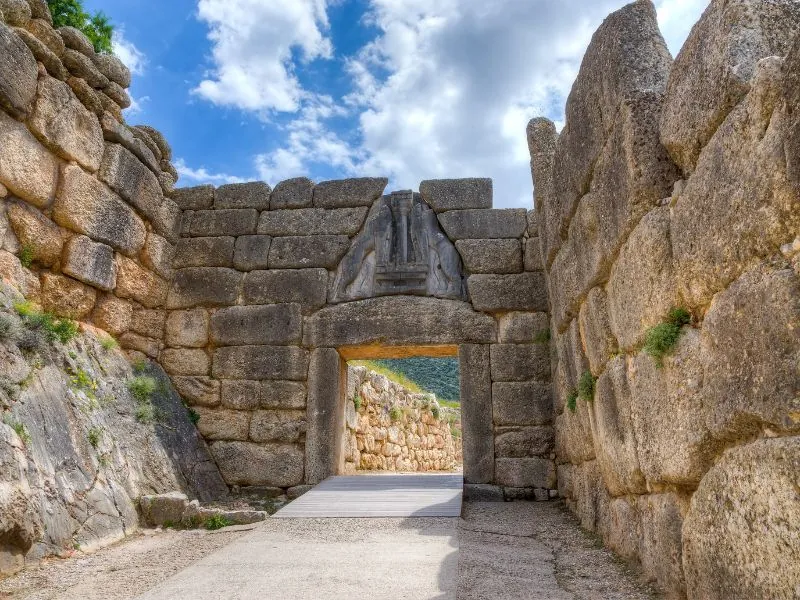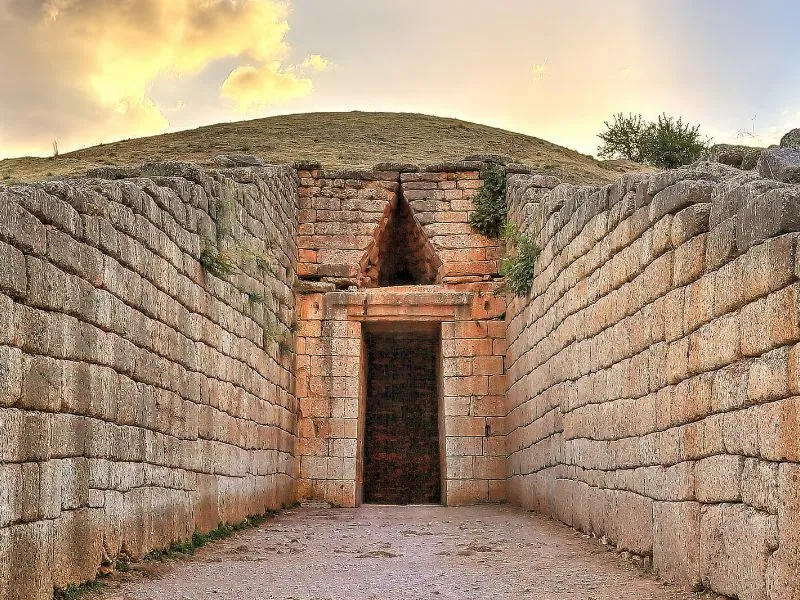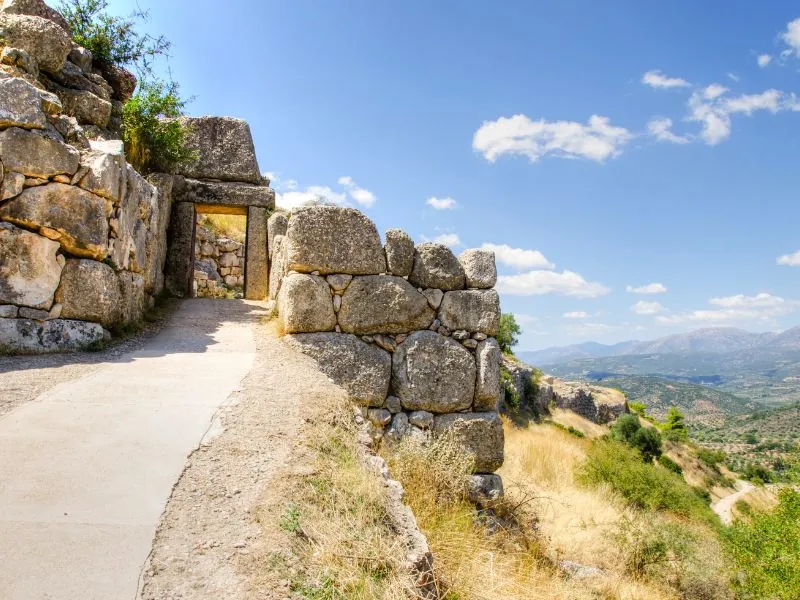
A few meters west of the palace megaron, behind Cyclopean walls better known for spears than incense, lies the Mycenae Cult Center. Built and embellished between 1350 and 1200 BCE, this compact cluster of shrines, horns of consecration and frescoed corridors shows that the warrior-kings of Mycenae paired military might with elaborate ritual. Walk its processional ramp today and you step into the scented, color-splashed heart of Bronze-Age spirituality.

| Zone | Stand-out Features | Likely Function |
| Room Pi | Gypsum floor, bench altar, fresco of hourglass shields | Main indoor shrine for elite rituals |
| Room Omega | Clay idols in niches, ash layer 5 cm thick | Burnt offerings & figurine display |
| South Shrine | Twin plaster horns of consecration, libation basin | Outdoor altar visible from ramp |
| Processional Ramp | 20 m long, 2 m wide, flanked by terraces | Guided worshippers from Lion Gate to shrines |
| House of the Sphinxes | Residential wing with frescoed banqueting hall | Priestly residence & ritual dining |
All stand on the steep west slope, barely ten meters below the royal palace, underscoring how closely religion and government intertwined at the Mycenae Cult Center.

Excavators recovered more than 500 terracotta idols:
Many were painted in iron-oxide red or manganese purple; some still carry gold-leaf traces that once shimmered in torchlight. Finds cluster near Room Omega’s north wall, implying a shelved display smashed by the final earthquake-fire of c. 1200 BCE.
Libation sets—shallow kylikes with pierced stems—lay beside ash basins, strengthening the link between figurines and liquid offerings at the Mycenae Cult Center.
Ash deposits and butchered bone layers prove cyclical ceremonies; repeated white-wash coats on walls show that shrines were renewed seasonally, echoing Minoan practice while asserting a distinct mainland style.
Tablets from the palace store-rooms link directly to the shrines:
Such records prove that the Mycenae Cult Center was not an independent temple economy but an appendage of palatial accounting.

A major earthquake (~1250 BCE) fractured floors; hasty buttress walls and fresh staircase treads show quick repairs. Final abandonment came with the broader citadel destruction c. 1200 BCE: charcoal, collapsed roofs, smashed figurines. Yet Geometric (8th-century BCE) terracotta hearths inside Room Pi indicate later visitors—perhaps early Argive pilgrims—still honored the site, converting palatial shrines into hero cult loci.
The Mycenae Cult Center proves that Bronze-Age power needed more than swords and fortifications; it needed spectacle, incense and goddess figurines overlooking the plain. Shrines, frescoes and linear-accounted offerings fuse elite religion with royal propaganda, reminding today’s visitors that the citadel’s stone lions guarded not just kings but the living presence of divinity itself. Walk its ramp, pause before horned altars and imagine crimson-robed priestesses pouring perfumed oil—the scent of faith that perfused every corner of Mycenae’s mighty citadel.